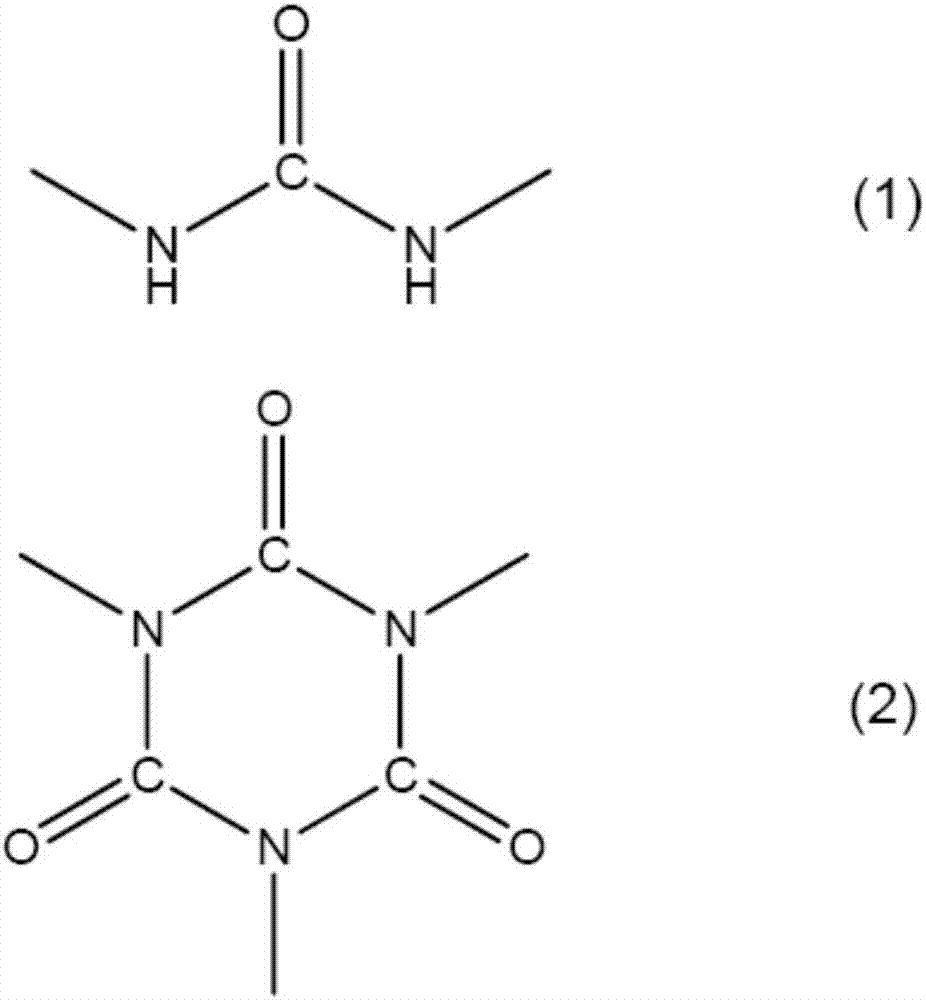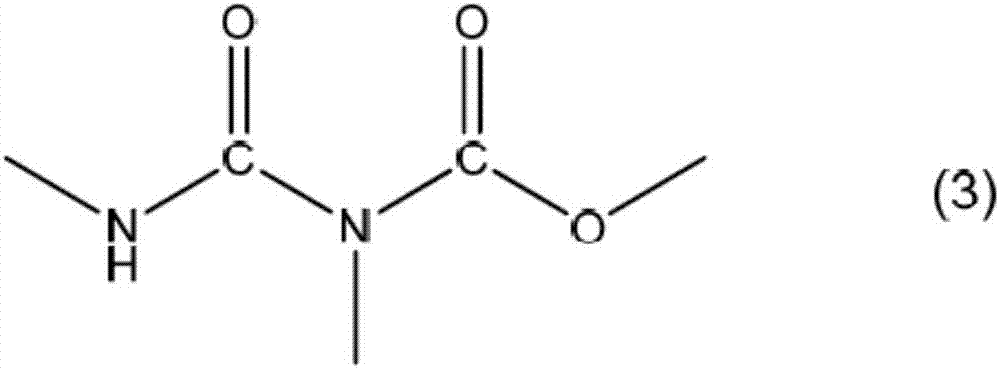Polyisocyanate composition, coating composition and method of manufacturing coating material
A technology of polyisocyanate and diisocyanate, which is applied in the field of polyisocyanate composition, can solve the problems of bad influence of combustion catalyst and different effects, and achieve excellent moisture stability and high drying effect
- Summary
- Abstract
- Description
- Claims
- Application Information
AI Technical Summary
Problems solved by technology
Method used
Image
Examples
Embodiment 1
[0135] A nitrogen atmosphere was formed in a four-necked flask equipped with a stirrer, a thermometer, a reflux cooling pipe, and a nitrogen blowing pipe, and 600 parts of HDI, 10.8 parts of 1,3-butanediol as a glycol, and 0.24 parts of water (relative to HDI 400 ppm), the temperature inside the reactor was kept at 90° C. for 1 hour under stirring, and the carbamate reaction was carried out. Then, the temperature in the reactor was kept at 80° C., 0.03 parts of tetramethylammonium caprate was added as an isocyanurate catalyst, and the refractive index of the reaction liquid was measured. Phosphoric acid was added at the point when the yield was 55%. Stop responding. After filtering the reaction solution, unreacted HDI was removed using a thin film evaporation tank. The obtained 343 g polyisocyanate composition had a non-volatile content of 99.8% by mass, a viscosity of 20800 mPa·s at 25°C, an isocyanate group concentration of 19.2% by mass, a diisocyanate monomer concentratio...
Embodiment 2
[0137] A nitrogen atmosphere was formed in a four-necked flask equipped with a stirrer, a thermometer, a reflux cooling tube, and a nitrogen blowing tube, and 600 parts of HDI, 24 parts of 1,3-butanediol as a glycol, and 0.24 parts of water (relative to HDI 400 ppm), the temperature inside the reactor was kept at 90° C. for 1 hour under stirring, and the carbamate reaction was carried out. Then, the temperature in the reactor was kept at 80° C., 0.03 parts of tetramethylammonium caprate was added as an isocyanurate catalyst, and the refractive index of the reaction liquid was measured. Phosphoric acid was added at the point when the yield was 55%. Stop responding. After filtering the reaction solution, unreacted HDI was removed using a thin film evaporation tank. The obtained 343 g polyisocyanate composition had a non-volatile content of 99.8% by mass, a viscosity of 14500 mPa·s at 25°C, an isocyanate group concentration of 19.0% by mass, a diisocyanate monomer concentration ...
Embodiment 3~5
[0139] The compositions and reaction conditions of the raw materials to be charged were changed as shown in Table 1, but were synthesized in the same manner as in Example 1. Table 1 shows the composition of the raw materials added, the reaction conditions and the physical properties of the polyisocyanate composition.
[0140] Table 2 shows the results of compatibility evaluation and moisture stability of the polyisocyanate compositions obtained in Examples 1 to 5.
PUM
| Property | Measurement | Unit |
|---|---|---|
| viscosity | aaaaa | aaaaa |
| acid value | aaaaa | aaaaa |
| acid value | aaaaa | aaaaa |
Abstract
Description
Claims
Application Information
 Login to View More
Login to View More - R&D
- Intellectual Property
- Life Sciences
- Materials
- Tech Scout
- Unparalleled Data Quality
- Higher Quality Content
- 60% Fewer Hallucinations
Browse by: Latest US Patents, China's latest patents, Technical Efficacy Thesaurus, Application Domain, Technology Topic, Popular Technical Reports.
© 2025 PatSnap. All rights reserved.Legal|Privacy policy|Modern Slavery Act Transparency Statement|Sitemap|About US| Contact US: help@patsnap.com



